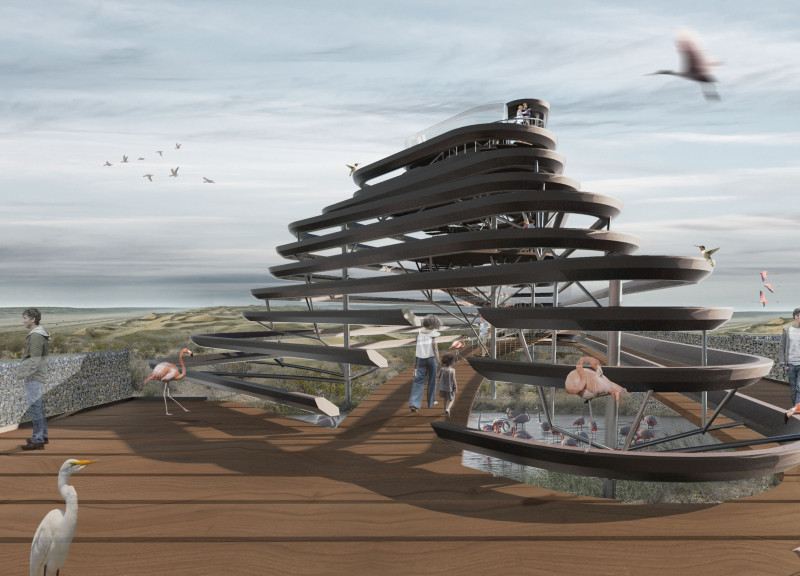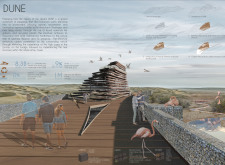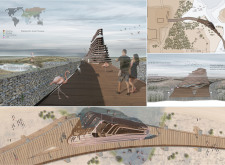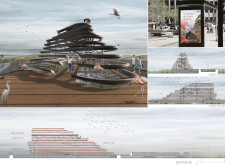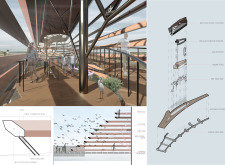5 key facts about this project
DUNE is located in the Al Wathba Reserve in the UAE, designed to blend into the desert landscape. It serves as a visitor center and nature observatory, intended to foster a deeper understanding of the local ecology. The design revolves around the concept of nature's reclamation, establishing a balance where human presence supports rather than disrupts wildlife, especially the local flamingo population.
Design Concept
The vision for DUNE centers on the visitor experience. Paths guide guests through representations of tall crops, creating a sensory journey that leads to the observatory tower. This tower features a distinctive tree structure that invites exploration and encourages an appreciation of the surrounding environment. The layout not only challenges visitors to engage with the landscape but also promotes awareness of its ecological significance.
Materiality
The project uses found materials, specifically gabion and recycled plastic, chosen for their sustainability and structural benefits. Gabion walls provide sturdy support while helping to control erosion in the area. Recycled plastic is used in various forms throughout the design, adding an innovative and practical aspect. This combination supports both the integrity of the structure and its environmental mission.
Environmental Integration
The arrangement of DUNE is thoughtfully linked to its ecological context. Pathways twist between the dunes, and viewing platforms are strategically located to enhance sightlines while limiting disturbance to local habitats. The design includes gaps that facilitate natural water flow and support biodiversity. These details allow the surrounding vegetation to remain vibrant and robust.
The observatory tower’s tree structure stands out in the landscape, inviting visitors to enter a space where they can observe local wildlife closely. This design detail underlines the intent to both celebrate and preserve the natural setting, providing a valuable experience of the reserve's ecology.


